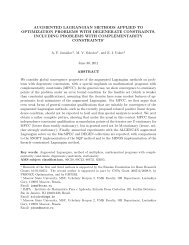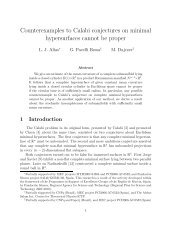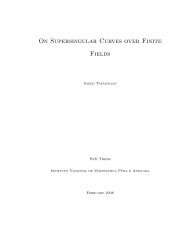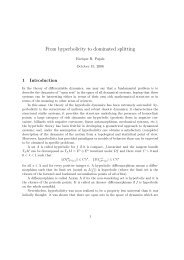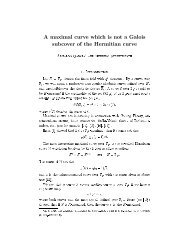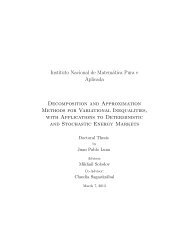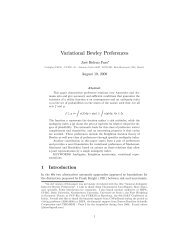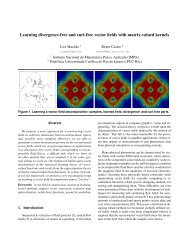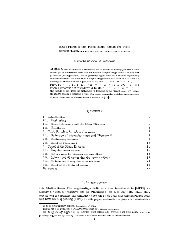a reduced model for internal waves interacting with submarine ...
a reduced model for internal waves interacting with submarine ...
a reduced model for internal waves interacting with submarine ...
You also want an ePaper? Increase the reach of your titles
YUMPU automatically turns print PDFs into web optimized ePapers that Google loves.
where c 1 and c 2 are two functions of the wavenumber k. Using Fourier Series we<br />
can write the general solution <strong>for</strong>η, at least in a <strong>for</strong>mal manner, as<br />
η(ξ, t)= 1<br />
2π<br />
∞∑<br />
k=−∞<br />
c 1 (k) exp ( iω(k)t ) e ikξ + 1<br />
2π<br />
∞∑<br />
c 2 (k) exp ( −iω(k)t ) e ikξ .<br />
k=−∞<br />
Each term represents one wave mode, see [30]. Since the dispersion relationω(k)<br />
is odd, each wave propagates in one direction: the first wave travels to the left, the<br />
second one to the right. Returning to Fourier space, from the initial condition in<br />
(4.11) we have,<br />
There<strong>for</strong>e,<br />
and<br />
⎧<br />
c ⎪⎨ 1 (k)+c 2 (k)=̂η 0 (k),<br />
⎪⎩ c 1 (k)−c 2 (k)= k<br />
ω(k)û10(k).<br />
(<br />
c 1 (k)=0.5 ̂η 0 (k)+ k )<br />
ω(k)û10(k)<br />
(<br />
c 2 (k)=0.5 ̂η 0 (k)− k )<br />
ω(k)û10(k) .<br />
(4.12)<br />
For one propagation direction we set c 1 = 0, then<br />
2c 1 =̂η 0 (k)+kû10(k)/ω(k)=0,<br />
which implies the following relation between each amplitude of the initial condition<br />
<strong>for</strong> u 1 and the amplitude of the initial condition <strong>for</strong>η:<br />
û 10 (k)=− ω(k)<br />
k ̂η 0(k), k0.<br />
We use this relation to provide the initial condition <strong>for</strong> u 10 (by means of an FFT)<br />
72



